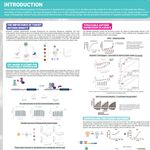Anticipating the Next Outbreak: Monitoring SARS-CoV-2 and an Expanded Infectious Disease Panel by LC-MS with Live Q&A
With recent emergences in new infectious diseases and their variants, there is a need to develop faster and more specific analytical tools to detect different respiratory infectious diseases such as SARS-CoV-2 or influenza viruses. Not only are their initial symptoms similar, but they are also both enveloped viruses with several common biological properties, often leading to challenges in disease identification. Although polymerase chain reaction (PCR) is a valuable tool in infectious disease testing, the recent pandemic demonstrated the need to develop analogous testing methods that utilize different consumables.
Infectious disease particles contain proteins that are biomarkers of infection. One approach capable of detecting such proteins is bottom-up mass spectrometry (MS). Proteolytic digestion of proteins generates peptides, which can be separated by liquid chromatography (LC) and detected by MS. Targeting multiple signature peptides of different proteins has been demonstrated to simultaneously detect peptides from five common respiratory infectious disease biomarkers; SARS-CoV-2, influenza virus A and B, respiratory syncytial virus, and human coronavirus (HCoV-229E).
In this talk, multiple workflows for infectious disease detection by LC-MS will be discussed. These workflows contain different sample preparation techniques, such as peptide enrichment via stable isotope-labelled standard and capture by anti-peptide antibodies (SISCAPA), immunoprecipitation of target proteins via antibody-coupled Dynabeads and a minimal sample preparation technique involving protein precipitation.
Learning Objectives:
1. Determine why peptide enrichment provides better sensitivity and selectivity of target peptides.
2. Elaborate how you can simultaneously detect a panel of infectious disease.
3. List the steps in quantifying proteins in biological matrices from sample to reporting.










